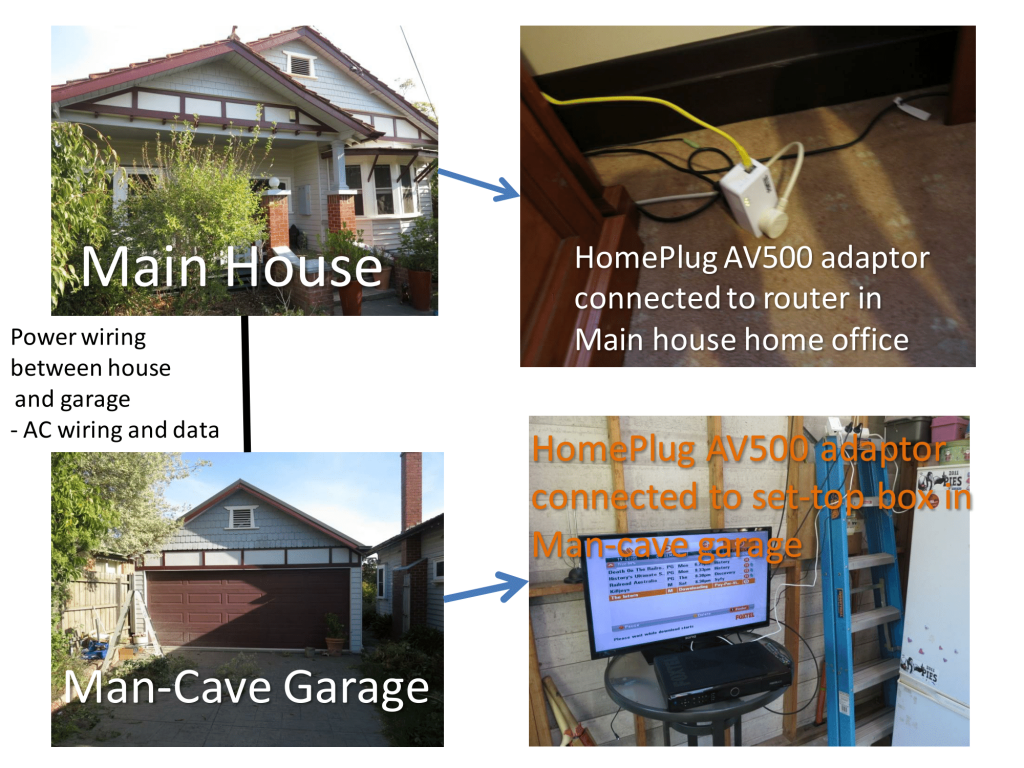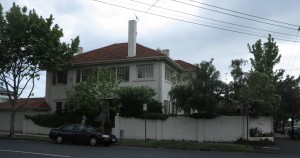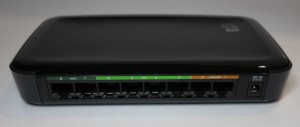Don’t forget HomePlug powerline networking in your home network setup
I have often seen network setups pitched especially at consumers as to be the wireless network. Typically this is about an 802.11n Wi-Fi segment hosted by a wireless router with 802.11n range extenders used to boost the signal coverage out further. Having a wired backbone for one of these networks typically has us thinking of Ethernet as the way to go but if you want it to look neat, you have to have the Ethernet cable pulled through your home which only works well if you are building or renovating your home.
Another technology that is easily forgotten about is HomePlug AV powerline-network technology. This technology uses the AC wiring in your home as a wired-network backbone. This initially existed in the 1.0 format with 14Mbps data transfer and graduated to 85Mbps. Now it is available as a HomePlug AV setup which works at 200Mbps or a HomePlug AV500 (IEEE1901) setup that can work at 500Mbps.
Just lately, there have been the arrival of HomePlug AV2 devices that provide increased robustness for the data as well as working at 600Mbps or 1.2 Gigabit speeds in newly-released varieties. The increased robustness comes about due to each device on the HomePlug segment serving as a repeater as well as use of all three wires including the “earth / ground” wire of the AC wiring setup for the data transfer.
Similarly, choosing a HomePlug adaptor with a built-in AC socket can lead to more reliable operation due to the fact that he integrated AC outlet is filtered in a way to prevent electrical noise from the device you plug in to it getting in to the AC current. This noise, typically generated by a lot of switch-mode power supplies used in today’s electronics, can impair the data communication on the HomePlug network segment that is sharing the same AC line.
The devices typically come in HomePlug-Ethernet adaptors with some of them having a multiple-port Ethernet switch in them and, in the UK especially, a HomePlug-Ethernet adaptor which directly plugs in to the wall and has one Ethernet socket is typically referred to as a “homeplug”. This means that you connect your computer, router or other network device to the HomePlug device using an Ethernet cable.
It is worth noting that a few HomePlug-Ethernet adaptors are appearing that also work as Power-Over-Ethernet power-sources according to the 802.3af or 802.3at (high-power) standards. This means that they can supply power to network-connected devices that take power via their Ethernet connection and it leads to one cable between these “homeplugs” and the network-connected device as well as not needing to consider extra power for these devices. The key applications that these adaptors serve well would be Wi-Fi access points, IP-based surveillance cameras or VoIP desk telephones where there is a desire to run one thin wire to these devices.
There are also a few HomePlug devices which have an integrated Wi-Fi access point along with an Ethernet connection and these are pitched at the idea of extending the coverage of your Wi-Fi wireless network segment without losing the bandwidth available which happens with wireless range extenders.
Where do I see the HomePlug powerline network fit in
I see this network fit in as a supplementary “wired no-new-wires” network segment suitable for a variety of reasons. For example, if you aren’t wiring your premises for Ethernet, you can use a HomePlug segment to provide reliable wired network connection for normally-sessile devices like smart TVs and video equipment, printers and the like. Even if you do have an Ethernet segment, you can use a HomePlug powerline segment as an infill measure to cover parts of the house that you don’t have Ethernet connections in.
HomePlug comes in to its own with a temporary wired network where you don’t want to use extra cables. This comes in to its own when you are repositioning furniture on a trial basis before you commit to calling in electricians to pull Ethernet sockets for your new setup; or a small shop where you want to shift the POS system during a sale or special event. As well, HomePlug comes in to its own as a wired network for rented premises where you are not allowed to or it’s not worth the resources to pull extra wiring through the walls.
There are even some places where HomePlug technology is the only cost-effective network technology to assure premises-wide network coverage. These are where a place has, for example, a very thick dividing wall or remnants of a disused fireplace, that is not worth the cost and time to pull wire through and Wi-Fi wireless networks will not perform adequately past that wall.
In some cases, HomePlug can work well with linking an outbuilding like a garage, barn or cabin / granny-flat to the main house’s network and Internet connection. I have even successfully set up one of these arrangements successfully to link a garage that was purposed as a “man-cave” to the home network and Internet that existed in a suburban home.
What needs to be done
Retailers and Internet service providers need to do their bit to promote HomePlug technologies and the concept of having two or more network media in a small network. This includes using a wired backbone and access point to “push out” a Wi-Fi segment or using something like HomePlug to connect your home theatre to your home network.
One positive step that is taking place is nVoy which allows a single point of control to apply between Wi-Fi, HomePlug, MoCA and Ethernet to allow for “best case” data transfer and simplified network configuration. Here, this could come in to its own with creating the business-grade “extended service set” for the Wi-Fi segment where you have two or more access points connected to an Ethernet or HomePlug backbone and with the same SSID and security parameters. Once this is established in the marketplace, there needs to he help with exposing the reality of complementing network media providing the home network that works smoothly.
How to give this a go
One device and situation you could target with HomePlug AV in your existing network would be your games console or smart TV and setting this up to work with this technology when bridging it to the home network. This is more so if you haven’t wired your home for Ethernet or haven’t put an Ethernet connection where the TV currently is.
Similarly, repositioning your Ethernet-capable network printer to somewhere where it looks better to you and suits your needs better could be a chance to implement a HomePlug network setup in your network.
Here, it is simply about giving the HomePlug powerline segments a go as a “wired no-new-wires” medium to connect devices to your home network and is something I underscore on this Website.
This article has been updated on January 2014 but has been updated to reflect the existence of HomePlug adaptors that can power network devices using Power-Over-Ethernet. As well, I have added a use-case regarding linking an external building like a garage or barn to the main house’s network and Internet connection.




